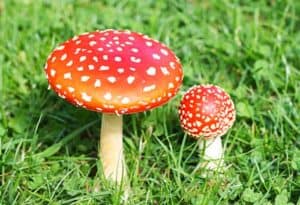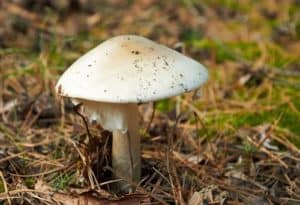5 Most Dangerous Hazards to Protect your Labrador from this Fall
As fall weather approaches, there are some scary things to watch out for with your Labrador.
1. Snakes
Snakes preparing for hibernation during the winter months may be more visible in the fall, which can increase your dog’s risk of being bitten. Clean up any spilled bird seed, fruits, foods. Stay clear of long grasses and rocky walls or out-croppings.
2. Shrooms!
Since dogs usually come across mushrooms during walks and other outdoor activities, especially if you live in a region with lots of moisture, it’s important to take extra care to keep pets away from areas where mushrooms might be sprouting. Dogs tend to be attracted to two deadly mushroom species: Amanita phalloides and Inocybe. Both varieties have a fishy odor, which may be the lure. See photos below for some to watch out for. If you dog ingests one of these call you emergency veterinary service immediately or Pet Poison Helpline at 855-764-7661.
Remove any and all you come across in your yard. Wash your hands immediately after picking as the poison can remain on your hands and poison you or your dog or anything it touches.
3. Rodent Poison
Once the weather turns cool, rats and other rodents start looking for shelter and warmth in and under buildings, and in response, people start putting out rodenticides that are unfortunately highly toxic to pets. This can be part of a monthly or quarterly pest control service for residents, such as Ehrlich. You may want to check with neighbors to see if they are using such a service.
Needless to say, if you suspect your pet has ingested any type of rodenticide, get her to your veterinarian or the nearest emergency animal hospital right away, and if possible, bring a sample of the product she consumed so the vet knows the type of poison they’re dealing with.
4. Engine Coolants
Another substance people use in the colder months of the year that is highly toxic to pets is antifreeze. Fortunately, anti-freeze coolant can be easily avoided by following a few simple safety tips:
- Look for antifreeze products containing the safer propylene glycol rather than highly toxic ethylene glycol
- Keep antifreeze containers tightly closed and stored out of reach of your pets
- Dispose of empty or used antifreeze containers properly
- Be careful not to spill antifreeze, and if you do, clean it up immediately; check your car radiator regularly and repair leaks right away
- Don’t let your pet roam unsupervised where he may have access to antifreeze
Fortunately, U.S. manufacturers of antifreeze and engine coolants have begun to add bittering agents (e.g., denatonium benzoate) to their products to discourage pets, children and wildlife from sampling the sweet-tasting liquid.
5. School Supplies
According to Dr. Karen Becker, “Another risk the change of seasons from summer to fall presents for pets is, believe it or not, back to school supples. For example, if you’ve indulged your kids with fruit-scented pencils and erasers, they can attract your dog like a moth to a flame. Common school supplies that present a potential choking hazard for pets include: glue sticks, markers, crayons, pens, paperclips and action figures.”
While these items are considered “low toxicity” to pets, there is the potential for GI upset and even a blockage, so be sure children keep their school supplies out of reach of any pets.
Now…go outside, rake some leaves and have fun playing in them with your Labrador today!!
Photo credit: D 235426012 © Evgenyatamanenko | Dreamstime.com




1 Comments